Although some would dispute this statement, V8 engines are still the golden middle ground. At least performance/price wise. They are still much more powerful than their 4 or 6-cylinder brethren, while not being nearly as expensive as V12 or larger powerplants. Although, they aren’t particularly fuel efficient. And that seems to be one of the most important engine-related categories these days. But, if history taught us anything, it’s that fuel efficiency is overrated. Especially in the U.S. where some of the best V8 internal combustion engine models ever built served as automotive industry’s backbone.
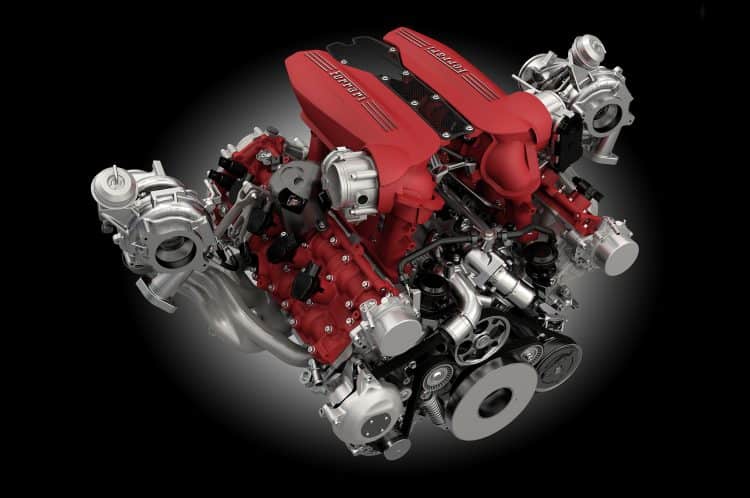
V-8 engine models once reigned supreme, then went into hibernation come early seventies. It has since returned in glorious fashion, only to begin making way for smaller forced induction mills in recent years, again. But, fear not. Things aren’t nearly as grim as they used to be during the seventies. Market is still flooded with V8s. What’s even more important; it’s flooded with extremely good V8s. Whether it’s power, sound or build quality you’re going for, modern V8s often have it all. Here are some of modern era’s best V8 engines money can get you these days.
Ranking The Best V8 Motors Of The Present Day!
General Motors 6.2L LT4 Supercharged V8
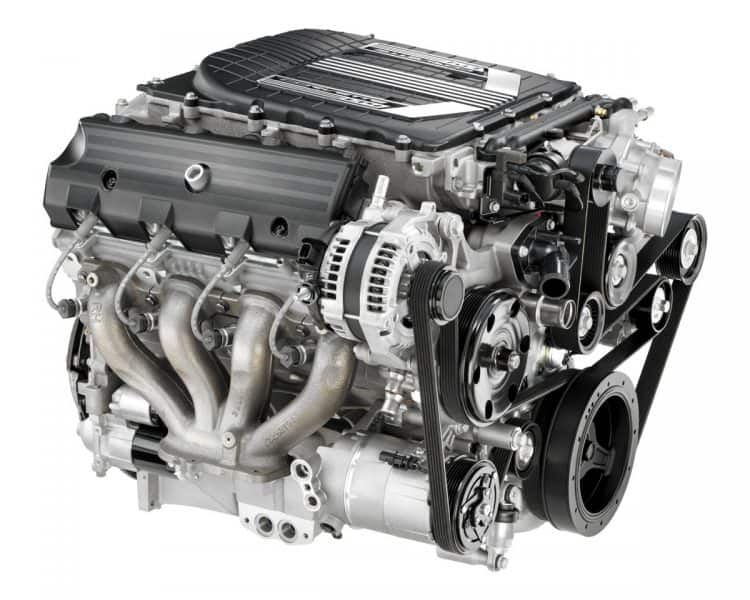
It’s hard to argue that Chevrolet small-blocks are some of the best V8 engines ever created. They were affordable, compact, durable, reliable, and easy to maintain and modify. If it had Chevy engine written on the side of it, you were onto a winner. Their successors have built upon that. They’re all of the above mentioned in modernized package. And fifth generation LT4 small-block crate engine stands out in the crowd. Consider any modern small-block worthy of this list, but we’ve chosen LT4 for its performance. That and immense impact it’s had in the last couple of years. After all, it’s LT4 that stands behind Corvette Z06’s and Camaro ZL1’s 650 horsepower and 650 pound-feet of twist. It’s the most powerful Chevy small-block engine to date, although it’s limited to “only” 640 hp and 630 lb-ft of torque in the Cadillac CTS-V.
The LT4 small-block sports a rather high 10.0:1 compression ratio. At least for forced induction engines. This 1.7L Eaton TVS supercharged beast also sports aluminum heads, titanium intake valves, special forged aluminum pistons, and stainless steel exhaust manifolds among other feats. It actually continues where its predecessor, the LS9 left the stage. The same LS9 that used to power the Corvette ZR1 and the Equus Bass – a luxury, hand-crafted, Detroit-built muscle car that epitomizes the term resto mod.
Mercedes-Benz 4.0L M178 Twin-Turbo V8

We’d prefer if automakers would simply leave naturally aspirated engines alone. But in this day and age where power plays essential role, that’s practically impossible. Newest addition to the Mercedes-Benz V8 family here, replaces one such naturally aspirated V8. Instead of 6.2L M156 (M159 in the AMG SLS), we now get more compact 4.0L M178 bi-turbo mill with similar power output. The engine debuted in the AMG GT where it started with 456 hp. New AMG GT R is able to squeeze as much as 577 ponies and 516 lb-ft of torque out of it, though.
This 460-pound engine uses rather peculiar design in order to remain compact and light. Mercedes-Benz calls it “hot inside V,” which means that its two BorgWarner turbos are positioned inside the V configuration. Between the cylinder heads to be more precise. It’s the first such engine manufactured by the German automaker. Apart from putting exhaust heat right upon turbo’s platter, this layout also enables simpler plumbing and less heat loss. High-quality aluminum engine redlines at 7,200 rpm, while its dry-sump lubrication system allows it to be mounted as low as it’s necessary in supercars such as the AMG GT. Although it has reduced bore compared to the M156, M178’s forced induction-boosted performance justifies old and beloved powerplant’s discontinuation.
Radical 2.7L RPE V8
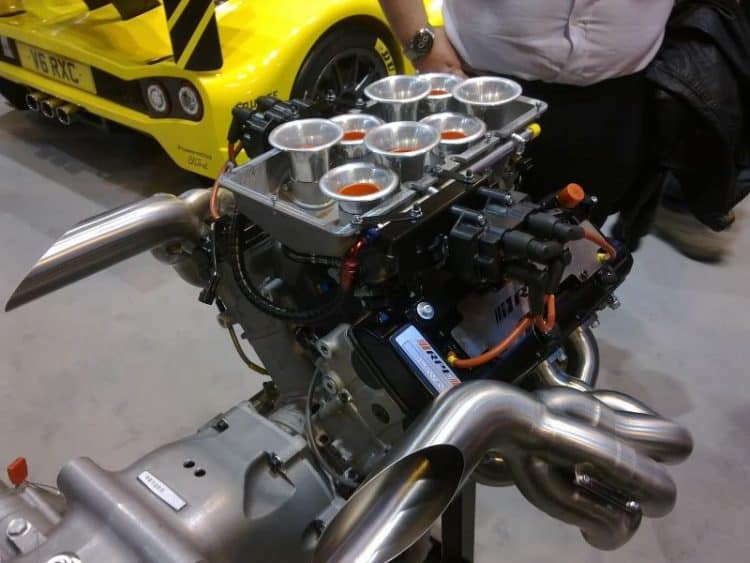
If you’re unfamiliar with Radical – they’re a UK-based small batch sports cars manufacturer. Why are some of their engines special? Because Radical is mostly using Suzuki motorcycle engines as a base. Although motorcycle engines aren’t exactly large, that doesn’t hinder Radical from converting them into V8s. One such engine is their 2.7L RPE V8 which currently motivates their 1,600-pound SR8 sports car.
The RPE V8 is capable of producing 405 horsepower which propels lightweight sports car to 60 mph in just 2.8 seconds. It also enables it to max out at 173 mph and achieve frightening 2.2 Gs of lateral force. Quite an incredible feat considering small 1.3L displacement of the Suzuki Hayabusa 4-cylinder which serves as RPE V8s base. Of course, Radical’s engine is built around couple of Suzuki engines upon Radical’s in-house cylinder block. It redlines at staggering 10,500 rpm’s which makes it one of the highest revving engines in existence. Truly commendable features for largely unknown low volume powerplant. It takes a lot of skill to build a high-performance car engine out of a couple of motorcycle lumps.
McLaren 4.0L M840T Twin-Turbo V8
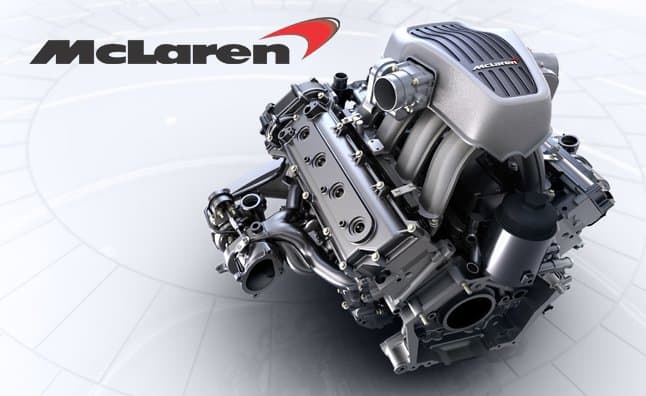
The M840T is the newest addition to McLaren’s powertrain lineup. All-new V8 replaces the long serving M838T 3.8L mill which used to power the likes of 650S, 675LT, and even McLaren P1. It’s currently only available with former duo’s replacement – the McLaren 720S. As the name suggests, new twin-turbocharged 4.0L develops 720 metric horsepower. That’s 710 brake horsepower and 568 lb-ft of torque. Curiously, it doesn’t have direct engine like many new vehicles do, but who cares when you’re driving a McLaren?
McLaren says that 41% of its components are new. Most importantly, twin-scroll turbos have received all new design which allows them to work their magic faster than it was the case with outgoing engine. Needless to say, that effectively reduces the dreaded turbo lag. It’s an improvement in almost every single way. But no McLaren comes cheap, and the 720S doesn’t either. It costs almost $300,000, and healthy chunk of that figure goes on 720S’ radical new engine.
Chrysler 6.2L Hemi SRT Hellcat Supercharged V8

Despite the SRT Demon debuting a few months ago, the Hellcat still stands out as the most powerful American V8 engine out there. The reason is that the 6.2L Demon V8 is limited production engine, and probably won’t make it past the Dodge Challenger SRT Demon. The 6.2L Hellcat V8, on the other hand, already powers the Dodge Challenger and Charger, and Jeep Grand Cherokee Trackhawk. There are even talks of Hellcat-powered Chrysler 300.
In other words, 707-horsepower Hellcat Hemi V8 is a proven powerplant of impeccable pedigree. And it’s inexpensive as well. At least compared to most of other engines on this list. But it wouldn’t be capable of making as much power as it does without 2.4L IHI supercharger. The same blower often found in AMG-tuned Mercedes-Benz vehicles. It delivers as much as 11.6 psi of boost, and in turn, boosts this Hemi’s performance sky high. But that’s not all. SRT Hellcat V8 also packs forged, high-strength alloy pistons with diamond-like-carbon coating pins. Then there are special crankshaft and control rods, and a cool variable valve timing system. In fact, 91% of the engine is new compared to conventional Hemi V8 used as its base.
BMW 4.4L S6344TU Twin-Turbo V8
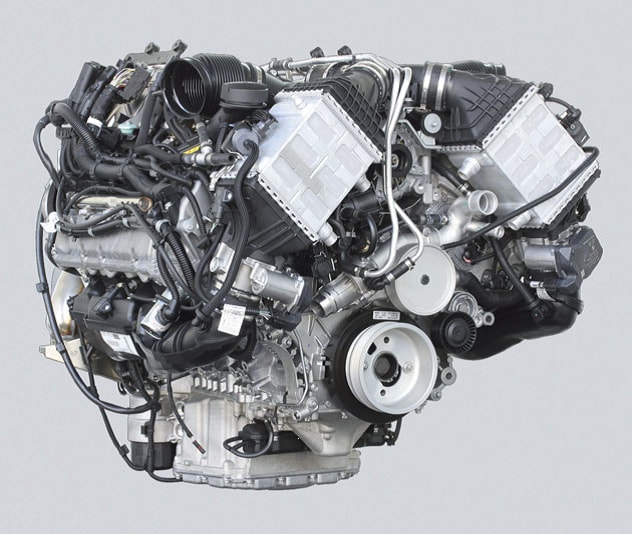
The BMW 4.4L S63 V8 provides power to the likes of the X5 and X6. That doesn’t mean a lot to most petrolheads out there, but what if I told you it also provides the BMW M5’s impeccable performance too? Well, it does. The S63 V8 has been powering BMW M5’s since 2011. The new generation which should make its debut soon will continue this trend.
The BMW S63’s cylinder block, crankshaft and rods were taken from conventional N63 version of the engine. S63 improves on the formula with new cylinder head, intake system, cross-engine exhaust manifold, and most importantly, dual Garrett MGT2260SDL turbos with boost of up to 17.5 psi. BMW M5 and M6 use the upgraded S63B44TU version of the engine which uses larger 10.0:1 compression ratio, BMW’s Valvetronic system, 22 psi of boost from MGT2260DSL Garrett turbos, and redlines at 7,200 rpm. All that is good enough for 575 horsepower and 500 lb-ft of torque.
Koenigsegg 5.0L Spyker V8
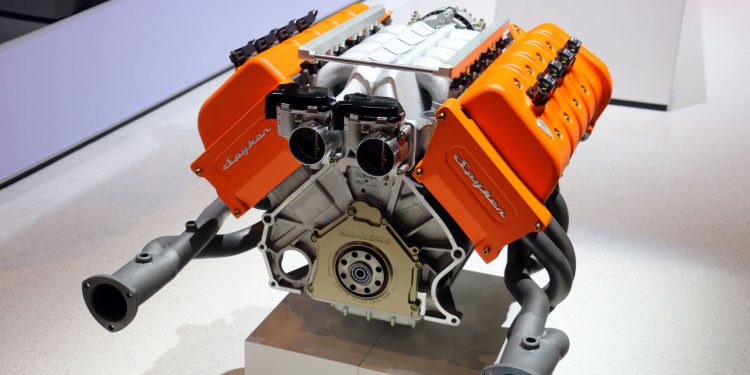
Koenigsegg’s 5.0L engine is one rare beast that precious few people can afford. Coupled with dual turbos, it generates up to 1,360 metric horsepower in Koenigsegg One:1. However, you don’t have to splash the cash in order to get one. There’s much more affordable way to do so since Koenigsegg now outfits Dutch automaker Spyker with their engines. Albeit, Spyker version of Swedish V8 in naturally aspirated and produces “only” 600 ponies at 8,000 rpm.
Koenigsegg’s mills will debut in already sold out first batch of 50 Spyker C8 Preliator sports cars. Dutchmen will produce another 50 Preliator Spyders, but my guess is they’re already spoken for as well. In any case, Koenigsegg-supplied 5.0L V8 benefits from the same aluminum construction minus the carbon fiber intake manifold. It does get a number of new, downsized bits, of course since Spyker doesn’t have to deal with gigantic amount of power the Agera does. All said and done, Spyker’s received one bulletproof gem of an engine that’ll certainly have a large impact on petite Dutch automaker in general.
Ferrari 3.9L F154 Twin-Turbo V8

We all know what Ferrari means to the automotive world, and we also know Italians built their reputation upon their V8-powered supercars. Newest addition to the family, F154 replaces the prized naturally aspirated F136 Ferrari-Maserati mill. It has slightly smaller displacement than that of its predecessor, but compensates with addition of two twin-scroll IHI turbochargers. It’s Ferrari’s first twin-turbo V8 engine since F120A, long ago found in Ferrari F40.
3.9L F154 V8 boasts aluminum alloy cylinder block and heads in a 90 degree angle. Unlike in Maserati applications where it sports crossplane crankshaft, Ferrari models come with flat plane crank. F154 currently powers the likes of Ferrari California, 488 GTB, and GTC4Lusso T. It can also be found in newest Maserati Quattroporte GTS, while V6 version of the engine powers Alfa Romeo Giulia Quadrifoglio. F154 V8’s current maximum amounts to 661 ponies in Ferrari 488 GTB. There’s potential for more, however, and it’s only a matter of time before Ferrari fulfills it.
Jaguar 5.0L SVR Supercharged V8

This is basically a version of the Jaguar AJ133 V8 that’s debuted in 2009 and has found its way into numerous Jaguar and Land Rover applications. This version, developed by SVR (Special Vehicle Operations) department, generates up to 575 horsepower and 516 lb-ft of torque. It’s currently available with Jaguar F-Type SVR coupe which is the first Jag since XJ220 to reach 200 mph mark.
As you can see, it draws extra power out of twin vortex Eaton supercharger, and does 0 to 60 in 3.5 seconds. Engine itself is one nicely sculpted chunk of aluminum complemented by Inconel titanium exhaust system and otherwise similar bits and pieces as in conventional AJ133 V8’s. This means SVR version of the mill is just differently calibrated in order to yield more power. There’s potential for more. I don’t doubt it.
Ford 5.2L Voodoo V8

When Ford borrowed flat-plane crank idea from Ferrari, they created arguably the best V8 engine in company’s history. 5.2L Voodoo V8 redlines at 8,250 rpm, delivers evenly spaced exhaust pulses, and generally breathes better. That’s why this naturally aspirated V8 generates 526 horsepower in Mustang Shelby GT350 and GT350R.
Voodoo V8 borrows 5.0L Coyote’s aluminum block, albeit with larger bore and stroke which result in bigger displacement. It also sports larger heads, forged aluminum pistons, forged steel crank and connecting rods, and high 12.0:1 compression ratio. It’s one of the best American V8 engines ever built. Due to different approach from typical American V8’s, Voodoo emanates a different symphony than that of its coevals. This is what makes us proud to be American.
The 7 Most Famous Muscle Era V8s

Muscle cars are a huge part of American culture and one of the most popular types of vehicles to be interested in worldwide. The main feature of these cars being a huge rumbling beast of a V8 engine under the hood. Muscle cars came in all shapes and sizes, as did the motors that were crammed in them. Here is a list of the most popular and sought after American V8 car engines from the prime time of muscle cars.
7. Ford 289

Introduced in 1963 the 289 with a 2 bbl carburetor was brought into production to replace the 260 v8. Early performance specs were 190hp and 258lb.ft. of torque. In 1964 a performance package was introduced and gave it 210hp. and 300lb.ft. of torque. It came as the new motor in the 1964 1/2 Mustang and the new Fairlane. The 289 K code was introduced in late 1963 and produced 271hp and 312lb.ft of torque. These Ford V8 car engines powered the Mercury Comet and became an option for Mustangs in June 1964. They are highly sought after and very valuable.
6. Oldsmobile 455
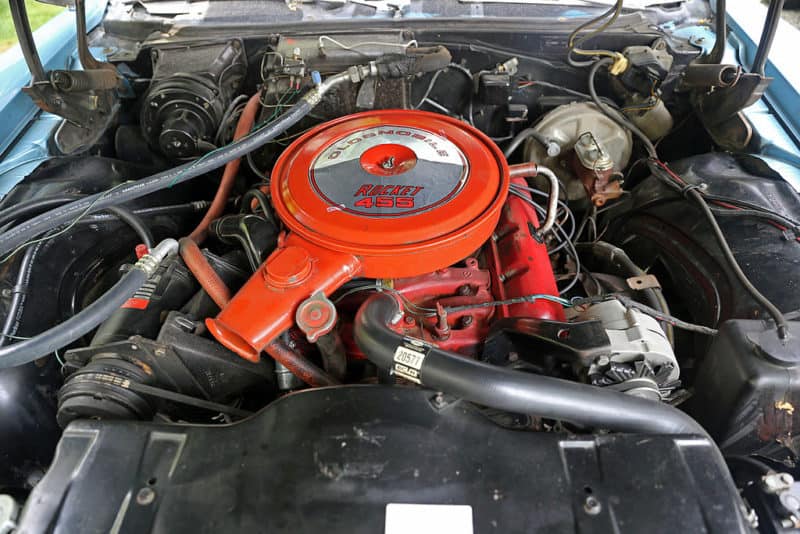
This motor was based off of the Oldsmobile 425. In 1968 the 425’s stroke was lengthened to 4.25 inches. although it retained the bore from the discontinued 425. Versions differed and were used in many vehicles. The motor produced 275-400 horsepower depending on the application. Most notably of which was the Oldsmobile 442. A rather strange application was in mid-70’s GMC motor-homes. Below is a picture of a rocket 455 in a 1968 Delmont 88
5. Chrysler Big Block 440
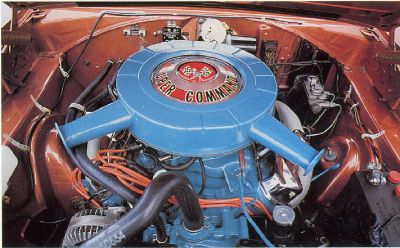
The Chrysler 440 was produced from 1965 until 1978. It was the last of the RB series engines. Notable cars it came in were the Dodge Challenger, the Plymouth Barracuda, and a lot of police cars and emergency vehicles of the era. Performance varies from year to year and between applications. From 1969 to 1971, the high performance version was rated at 375 HP and the 440 6 pack (3-2 barrel carburetors installed on a single 440) produced 390 HP. In the 70’s performance dwindled as emissions control took over along with different ways of testing HP. the 440 ended up only putting out 255 HP and was only for police duty.
4. Chevrolet 409

The Chevrolet 409 was introduced in the early years of muscle. It was announced alongside the Impala SS. From the beginning it was well known for its performance. It was so legendary that The Beach Boys wrote a whole song dedicated to racing their Car with a 409 Dual quad (2 4bbl carbs) under the hood. At that time the 409 made 360HP and by the end of its run in 1965 it produced an outstanding figure of 425HP.
3. Chevrolet 350 Small Block
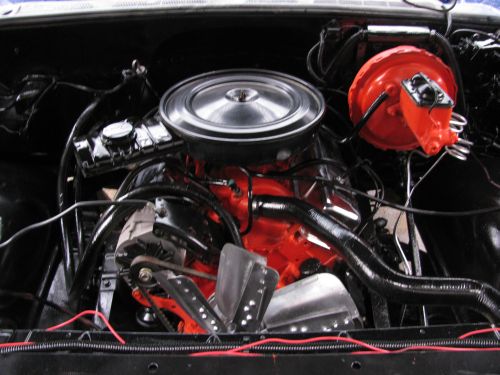
One of the most well known engines of all time, and a very long lived one at that. The 350 Was originally only available in the SS version of the Camaro or the Chevy II/Nova. Power output was 300 HP and torque output was 380 lb.ft. In 1971 the compression was lowered. and by 1972 the motor was only available in a nova if you got the SS package. And by the mid 70’s the power output was throttled by emissions control until it was below 200 HP. Aftermarket support was and is still readily available as the engine proved to be very reliable and easy to build and tune power out of. This motor and its variants were used for years in just about every application imaginable.
2. Ford 302 Windsor

The 5.0 Windsor (not to be confused with the Coyote 5.0) was a very long lived and widely used engine. It originated in 1967 as a motor based off of the one used in the GT40 race car. Ford needed a high performance motor for their cars that would easily fit in the bay of a mustang or other smaller cars. The engine itself wasn’t born until 1968, and although bred as a high performance engine, it found its way into trucks and passenger vehicles with sometimes almost half of the power it was originally rated for. It became another engine that was hurt by emissions control and detuning for help with fuel economy. (I should know this. My mother has a 1989 Lincoln Town Car with a 5.0 and it has around 150 HP.)
1. Chrysler 426 Hemi
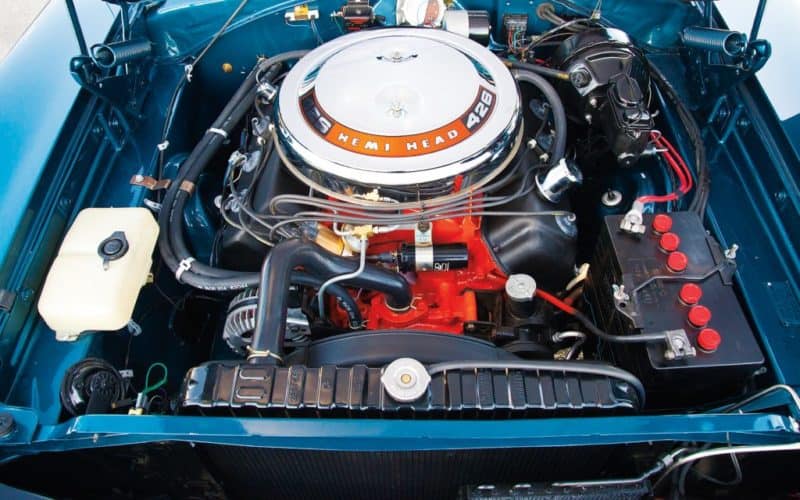
With its NASCAR roots, and drag racing history, this engine was famous from the start and was a mega hit. While the original 426 wasn’t street legal or available to the public. It was so well respected and known for its great performance that Chrysler decided to make a civilian version. The original version came out in 1964. It was then banned after one season in NASCAR due to it not being available in a production vehicle. So in 1965 Mopar released a handful of drag racing cars that were available to the public to get the green light to use it in NASCAR once again. Later on in 1965 it was released in quite a few street cars offered by Mopar and was available until 1971. Stock on the dynamometer it produced 433.5 HP and 472 lb.ft. of torque. this v8 engine is still used in drag racing today, and is commonly seen in funny cars.

